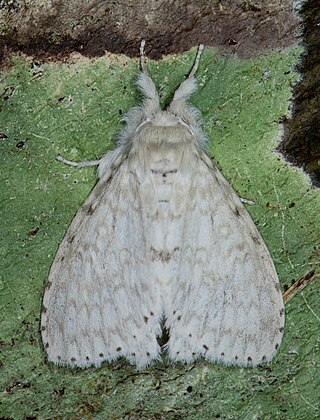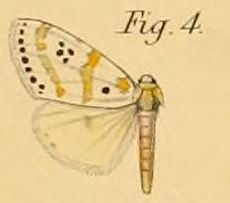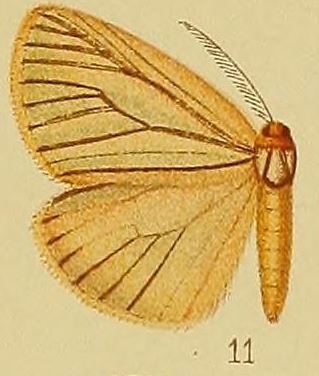Adetoneura is a monotypic moth genus in the subfamily Lymantriinae. Its only species, Adetoneura lentiginosa, is found on Fiji. Both the genus and the species were first described by Cyril Leslie Collenette in 1933.
Amphekes is a monotypic moth genus in the subfamily Lymantriinae. Its only species, Amphekes gymna, is found in the Chinese province of Yunnan. Both the genus and the species were first described by Cyril Leslie Collenette in 1936.
Aphomoeoma is a monotypic moth genus in the subfamily Lymantriinae. Its only species, Aphomoeoma mesembrinum, is found on Madagascar. Both the genus and the species were first described by Cyril Leslie Collenette in 1959.

Crorema is a genus of moths in the subfamily Lymantriinae. The genus was erected by Francis Walker in 1855.

Dura is a genus of tussock moths in the family Erebidae. The genus was erected by Frederic Moore in 1879.
Dyasma is a monotypic moth genus in the subfamily Lymantriinae erected by Cyril Leslie Collenette in 1961. Its only species, Dyasma thaumatopoeides, was first described by Schultze in 1934. It is found in the Central African Republic and Uganda.
Eala is a genus of moths in the subfamily Lymantriinae. The genus was erected by Cyril Leslie Collenette in 1937.
Euproctidion is a genus of moths in the subfamily Lymantriinae. The genus was erected by William Jacob Holland in 1893.

Hemerophanes is a genus of moths in the subfamily Lymantriinae. The genus was erected by Cyril Leslie Collenette in 1953.
Homaroa is a genus of moths in the subfamily Lymantriinae. The genus was defined by Cyril Leslie Collenette in 1955. The species are found on Madagascar.
Homoeomeria is a genus of moths in the subfamily Lymantriinae. The genus was erected by Hans Daniel Johan Wallengren in 1865.

Lacipa is a genus of moths in the subfamily Lymantriinae. The genus was erected by Francis Walker in 1855.
Leptepilepta is a genus of moths in the subfamily Lymantriinae. The genus was erected by Cyril Leslie Collenette in 1929.

Marblepsis is a genus of moths in the subfamily Lymantriinae. The genus was described by Hering in 1926.

Olapa is a genus of moths in the family Erebidae. The genus was erected by Francis Walker in 1855.

Pseudobazisa is a genus of moths in the subfamily Lymantriinae. The genus was erected by Felix Bryk in 1934.
Pteredoa is a genus of moths in the subfamily Lymantriinae. The genus was erected by George Hampson in 1905.
Stilpnaroma is a genus of moths in the subfamily Lymantriinae. The genus was erected by Erich Martin Hering in 1926.
Stracena is a genus of moths in the subfamily Lymantriinae. The genus was erected by Charles Swinhoe in 1903.
Synogdoa is a genus of moths in the subfamily Lymantriinae. The genus was erected by Per Olof Christopher Aurivillius in 1904.




